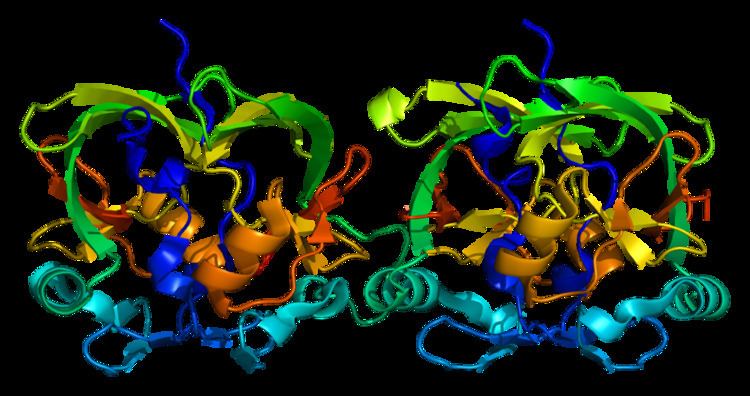Entrez 6310 | Ensembl ENSG00000124788 | |
 | ||
Aliases ATXN1, ATX1, D6S504E, SCA1, ataxin 1 External IDs OMIM: 601556 MGI: 104783 HomoloGene: 281 GeneCards: ATXN1 | ||
Ataxin-1 is a DNA-binding protein encoded by the ATXN1 gene.
Mutations in this gene have been linked to neuronal death in suffers of spinocerebellar ataxia type 1, an inherited neurodegenerative disease characterized by a progressive loss of cerebellar neurons, particularly Purkinje neurons. Pathogenic ATXN1 contains an abnormally elongated stretch of the amino acid glutamine. This elongation is variable in length. The shortest repeat length shown to cause disease in humans is 39 uninterrupted CAG triplets, and the longest observed contained 83 repeats. Longer repeat tracts are correlated with earlier age of onset and faster progression. How polyglutamine expansion in Ataxin-1 causes neuronal dysfunction and degeneration is still unclear. Mutant Ataxin-1 protein spontaneously misfolds and forms aggregates in the nucleus of Purkinje neurons, but it has been shown in mice that aggregation is not required for pathogenesis. Soluble Ataxin-1 interacts with many proteins, studies of such interactions have shown that polyglutamine expansion in Ataxin-1 causes both dominant gain-of-function and loss-of-function pathologies. It has been shown that other neuronal proteins can modulate the formation of Ataxin-1 aggregates and that this in turn may affect aggregate-induced toxicity.
Interactions
Ataxin 1 has been shown to interact with:
